The classic DIY string telephone with cups is easy to make at home and your kids will have lots of fun talking to each other “long-distance”!
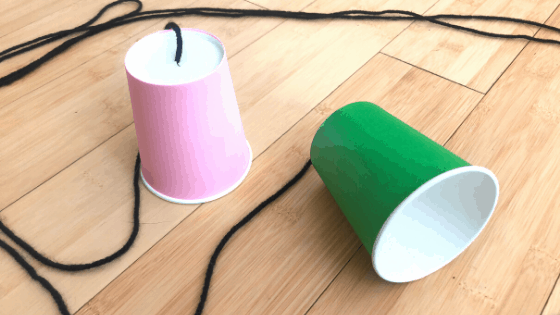
Do you remember making a paper cup phone when you were in elementary school?
It’s funny to discuss how telephones work with our kids nowadays. We haven’t had a landline for the longest time, so our kids have no clue what a traditional telephone looks like.
So it takes a little work to explain why we need a string to transmit the sound. What a different world we live in!
Get your kids talking with this string telephone you can make with just a few items you probably already have around the house. My kids loved this paper cup phone STEM project and used the string telephone to play educational games.
If you don’t remember doing this when you were a kid, here is a little reminder!
How to Make a Telephone with Cups and String
Supplies:
- 2 paper cups (you can also use disposable plastic cups)
- String (I used yarn)
- 2 paper clips
Instructions:
1. Cut a long piece of string. You can experiment with different lengths, but I recommend no more than 6-8 feet to start for younger kids. It’s difficult for the younger ones to understand that they need to keep the string taut for this experiment to work, and a longer string would be harder to work with.
2. Cut a small slit on the bottom of each paper cup.
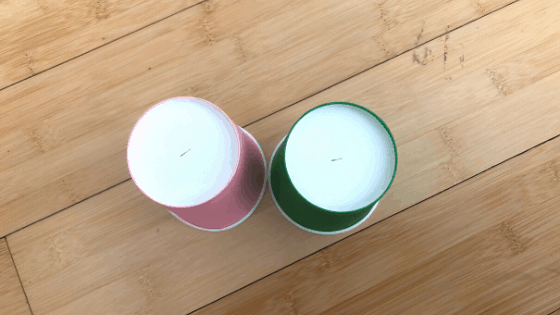
3. Thread the string through each cup.
If you are having trouble, you can do step #4 first and insert the end of the string through a paper clip. The paper clip can help you push the string through the small slit.
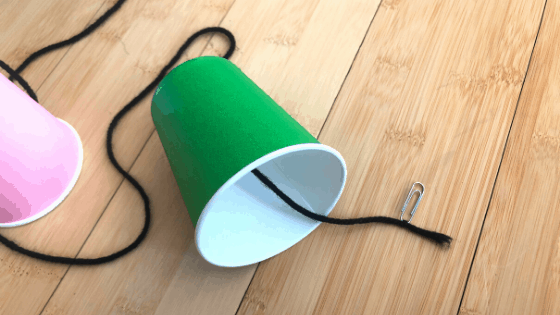
4. Slip a paper clip through each end of the string and tie a knot to prevent the string from falling out.
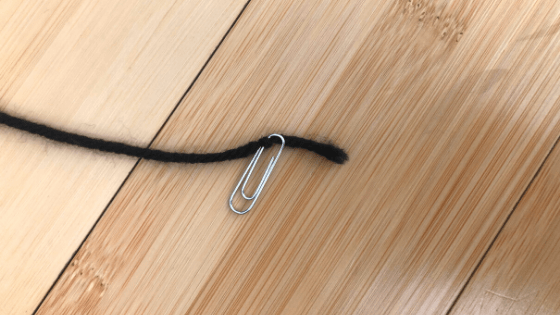
3. Have one or both kids walk slowly away from each other until the string is taut. The string should tight but not be touching anything.
4. Have one kid put the paper cup to his/her ear and have the other one softly speak into his/her paper cup.

If your kid can’t hear the other person with the paper cup telephone, you might be asking yourself, “Do cup phones actually work?” I can tell you that they really do, but make sure you check the following:
- Is the string taut?
- Is the string touching another object besides the cups?
- Is there noise in the background? If so, go to a quiet area.
The Science Behind the DIY String Telephone
The string telephone is the perfect experiment to explain to your kids about sound waves.
When we speak, our vocal cords make molecules in the air vibrate. Have your kids hum a song while holding their hands against their throats to feel the vibration. The vibration is what creates sound waves.
When you speak into a cup, your voice vibrates the air inside the cup, which in turn vibrates the bottom of the cup. These vibrations travel along the string and then vibrate the cup on the other end. The vibrations are converted to sound waves, so the person can hear through the other cup.
You will find that keeping the line taut is the key to making the string telephone experiment work. When the string is slack, the vibrations dissipate along the way, and they never reach the cup on the other end.
Another tip is to make sure the string doesn’t touch anything along the way. Otherwise, the sound waves will travel the wrong way.
You can use the DIY string telephone to hear surprisingly far!
Here are a few experiments for your kids to try:
- Use a plastic cup instead of a paper cup or vice versa. Does the type of cup matter?
- Use different types of strings and observe how the strings change the quality of sound. You can try yarn, cotton twine, fishing line, kite string, etc.
- Try different string lengths. How long can you make the line and still hear each other?
- Try making the string slack. Can you still hear anything?
- Touch the string to an object. Can you still hear anything?
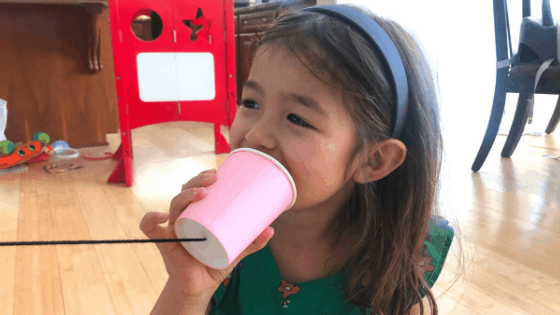
Final Thoughts on the Paper Cup String Telephone Activity
My kids cannot grasp that there was once a time when mommy and daddy had to use a landline telephone. The closest thing they experienced was a walkie-talkie, but even then, the walkie-talkie was wireless.
In case your kid asks why a landline telephone doesn’t have a straight, taut wire between the two telephones, here is the answer: Landline telephones have microphones that convert sound waves into electrical signals. The electrical signals can travel through wires and the telephone on the other end has an earphone inside that converts the electrical signals back to sound waves.
I hope your kid enjoyed traveling back in time and talking through a string telephone. The activity certainly brought back good memories for me!
For a sound wave activity that you can SEE, check out the salt vibration experiment.
YOU MAY LIKE:
